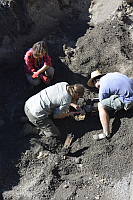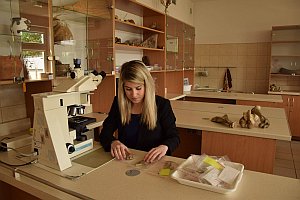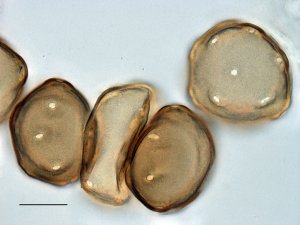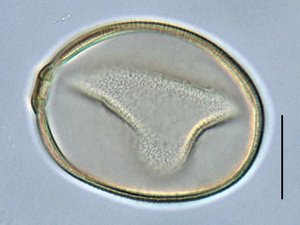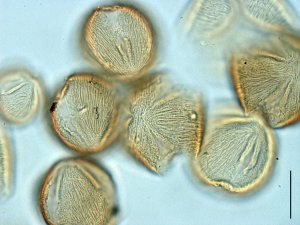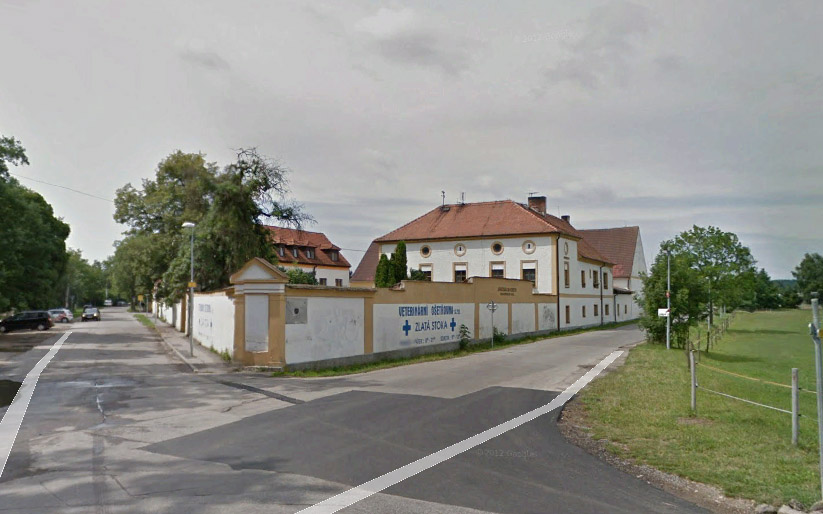Palynology - pollen analysis
Palynology (pollen analysis) in archaeological contexts deals with pollen grains recovered from sediments and other sources (eg. wells, cesspits, fields etc.) at sites of archaeological interest. Palynology (as applied in archaeology and palaeoecology) reveals the character of ancient landscapes, agricultural practises, and human settlements. It is one of the key tools unveiling the history of common life. In contrast to classical methods used in archaeology, the description of the human impact on the landscape, derived from the pollen record, is more detailed and complex. A disadvantage of this method is the requirement for a special type of sediment: only the permanent contact of the sediment layer with a wet environment ensures the good preservation of pollen grains.
What has been found so far?
Most results from the Czech Republic have been gathered from medieval features in larger Czech towns. The reason is the high frequency of archaeological rescue excavations in these towns and the sufficiency of sediments suitable for pollen preservation and recovery. The most suitable features are medieval wells, cesspits of various origin and use, and also diverse deposits, mostly with organic material. Pollens are usually present in high quantity and rich in species. The information derived from the pollen spectrum concerns both the close vicinity of the deposit (e.g. composition of vegetation next to the well or sump) and the composition of arable crops and plants used in the kitchen or husbandry. Ruderal plants and plants adapted to trampling are frequently detected. The occurence of certain species can indicate soil eutrophication.
The vegetation cover of a larger area (natural or semi-natural stands surrounding the settlement) can only be reconstructed on rare ocasions. The further back in the past the more difficult it is to detect some signs of presence of man and his impact on the landscape in pollen spectra. Neolithic settlement and landscape disturbance can only be documented by cereal pollen in cases where sediment suitable for pollen analysis is available next to the settlement.
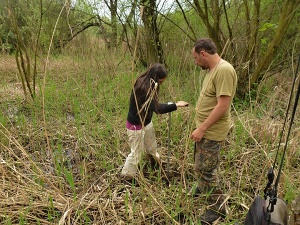
Terénní průzkum
Foto: J. Novák
Proving the presence of mesolithic people is even more difficult. Traditionally it is believed that mesolithic people had a similar impact on the landscape as herds of animals, i.e. there are no plant species indicating the anthropogenic influence of mesolithic culture.
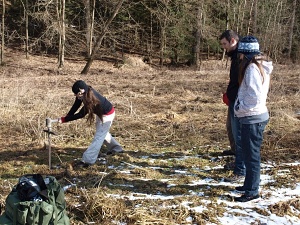
Terénní průzkum
Foto: L. Bílý
An important point in pollen analysis for archaeological purposes is the discovery of suitable sediment (Jankovská 1998).
Pollen analysis can usually help in the following ways:
•The reconstruction of both the natural and man-affected environment over a certain time period and geographic area.
•The reconstruction of changes in vegetation cover induced by humans.
•The reconstruction of agricultural practises, pasture, gathering of plants, ploughing, establishing and deserting settlements, forest clearing and burning, selective logging etc.
In general, the amount of information derived from the pollen record depends on sediment availability and quality and it will most likely decrease with the age of sediment (Jankovská 1994).

